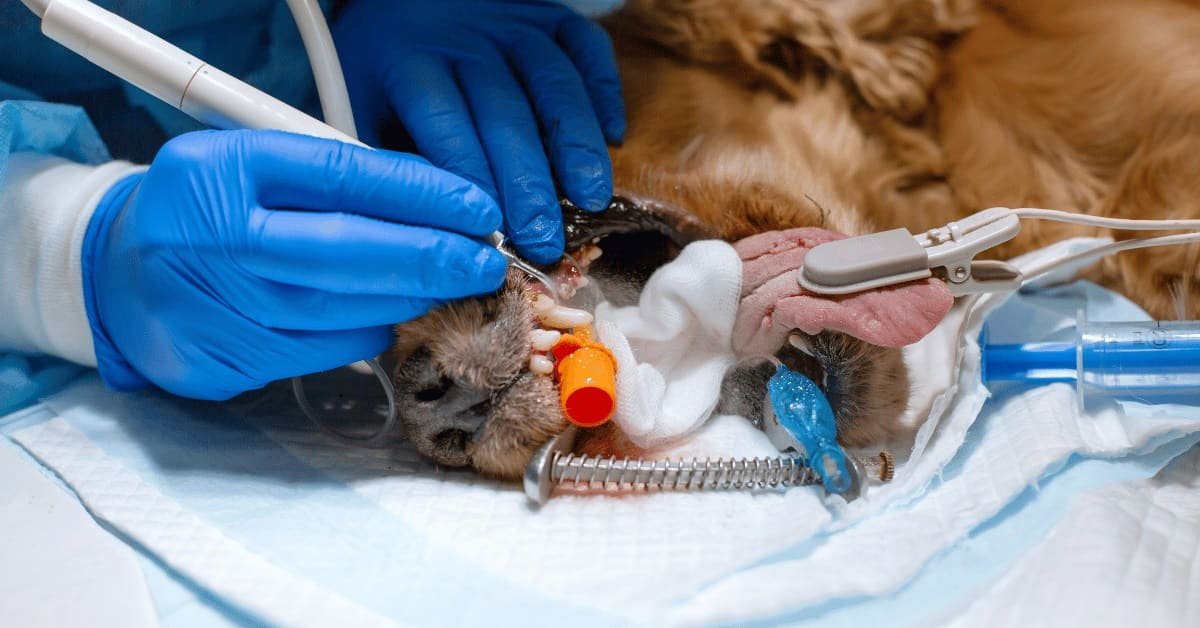A dog C-section typically takes 45 to 90 minutes. The procedure duration depends on the number of puppies and complications. So let’s read carefully: How Long Does a Dog C Section Take?
A C-section, or cesarean section, is a common surgical procedure in veterinary medicine. It is performed when a dog cannot deliver puppies naturally. This surgery involves making an incision in the dog’s abdomen and uterus to remove the puppies safely.
C-sections are critical for the health of both the mother and her puppies, especially in breeds prone to birthing complications. Knowing how long the procedure takes can help pet owners prepare for the surgery. Understanding the process can ease concerns and ensure the best possible care for the dog and her offspring.
Table of Contents
Introduction To Dog C-section: How Long Does a Dog C Section Take
Dog C-sections are common surgical procedures for delivering puppies. A C-section helps when natural birth is not possible. This guide explains why and how C-sections are done for dogs.
What Is A C-section?
A C-section, or Caesarean section, is a surgical procedure. It involves making an incision in the dog’s abdomen and uterus. This helps to deliver the puppies safely. Vets perform C-sections when normal delivery is unsafe.
Why Dogs Need C-sections
Several reasons make C-sections necessary for dogs. Some common reasons are:
- Large Litters: Too many puppies can complicate natural birth.
- Puppy Size: Puppies that are too large may get stuck.
- Breed: Some breeds have narrow birth canals.
- Health Conditions: Certain health issues can hinder natural birth.
Vets assess these factors to decide if a C-section is needed.
Pre-surgery Preparations
Preparing for a dog’s C-section involves several crucial steps. These steps ensure both the mother and puppies’ safety. Understanding these preparations can help pet owners feel more at ease.
Initial Veterinary Consultation
The first step is an initial veterinary consultation. During this visit, the vet examines the dog thoroughly. They discuss the health history and any complications. This helps in planning the surgery.
The vet also explains the C-section process. This includes the risks and benefits. Pet owners should ask any questions they have. Knowing what to expect helps reduce anxiety.
Pre-operative Tests
Before the surgery, several pre-operative tests are done. These tests assess the dog’s overall health. They include blood tests, X-rays, and ultrasounds. Each test has a specific purpose.
| Test | Purpose |
|---|---|
| Blood Test | Checks for infections or anemia |
| X-ray | Determines the number of puppies |
| Ultrasound | Monitors the puppies’ health |
These tests ensure the dog can handle surgery. They also help the vet plan the procedure. Knowing the number of puppies is crucial. It helps in making the surgery quick and safe.
After the tests, the vet provides specific instructions. These include food and water restrictions. Following these instructions is vital for a successful surgery.
Duration Of Dog C-section
Understanding the duration of a dog C-section is crucial for pet owners. This surgery helps deliver puppies safely. Knowing what to expect can ease anxiety.
Average Time In Surgery
The average time for a dog C-section is about 45 to 90 minutes. This includes preparation and recovery time. The actual surgery often takes 20 to 40 minutes. The time can vary based on several factors.

Credit: https://www.eastbayvetclinic.com
Factors Affecting Surgery Time
Several factors can affect the duration of a dog C-section. These include:
- The size of the dog
- The number of puppies
- The health of the mother
- The experience of the veterinarian
Let’s break down these factors:
| Factor | Impact on Time |
|---|---|
| Size of the dog | Larger dogs may take longer |
| Number of puppies | More puppies can extend surgery time |
| Health of the mother | Health issues can complicate surgery |
| Experience of the veterinarian | Experienced vets may perform quicker surgeries |
Each of these factors plays a role in the surgery’s length. Being aware of them helps set realistic expectations.
During The C-section
During a dog C-section, the procedure involves several critical steps. The veterinary team plays a vital role in ensuring the safety of the mother and puppies. Here’s a detailed look at what happens during the surgery.
Surgical Procedure Steps
- The dog is first given anesthesia to prevent pain.
- The vet shaves and sterilizes the surgical area.
- An incision is made in the dog’s abdomen and uterus.
- The puppies are carefully removed one by one.
- The vet checks each puppy for breathing and vital signs.
- Once all puppies are out, the uterus and abdomen are stitched up.
Each of these steps is performed with precision. This ensures the safety of both the mother and the puppies.
Role Of The Veterinary Team
The veterinary team consists of several key members. Each has specific duties during the C-section.
| Role | Responsibility |
|---|---|
| Veterinarian | Performs the surgery and monitors the mother. |
| Veterinary Technician | Assists the vet and monitors anesthesia. |
| Assistant | Prepares surgical tools and helps with puppies. |
The team works together to ensure a successful C-section. Their roles are crucial for the health of the mother and puppies.
Post-surgery Care
After a dog undergoes a C-section, post-surgery care is crucial. Ensuring proper care helps in a smooth and quick recovery. This section will guide you through immediate aftercare and long-term recovery.
Immediate Aftercare
Immediately after surgery, monitor your dog closely. Place her in a warm, quiet area. Keep her away from other pets and children. Check her incision site for signs of infection.
- Redness
- Swelling
- Discharge
Ensure she drinks water and eats a light meal. Offer small amounts of food frequently. Avoid strenuous activities. Follow your vet’s instructions for pain management.
Long-term Recovery
Long-term recovery involves regular check-ups and proper nutrition. Ensure your dog gets enough rest. Short, gentle walks can help once she’s more stable. Gradually increase the duration.
Monitor her incision site daily. Keep it clean and dry. Use an Elizabethan collar if she tries to lick the wound. Follow your vet’s advice on removing stitches or staples.
| Week | Activity Level | Diet |
|---|---|---|
| 1st Week | Minimal activity | Soft, easy-to-digest food |
| 2nd Week | Short walks | Regular diet, small portions |
| 3rd Week | Increased activity | Regular diet, normal portions |
Ensure she stays hydrated. Gradually reintroduce her normal diet. Watch for any changes in behavior or appetite. Consult your vet if you notice anything unusual.
Risks And Complications
Understanding the risks and complications of a dog C-section is crucial. Surgery always carries some risks, and a C-section is no different. Knowing what to expect can help you prepare better.
Potential Surgical Risks
During a C-section, there are several potential surgical risks to consider:
- Bleeding: Excessive bleeding can occur during surgery.
- Infection: The incision site can become infected.
- Anesthesia Complications: Some dogs may react poorly to anesthesia.
- Organ Damage: Nearby organs can be accidentally injured.
How To Mitigate Complications
To reduce the risk of complications, follow these steps:
- Pre-Surgery Checkup: Ensure your dog has a thorough checkup before surgery.
- Experienced Vet: Choose a vet with experience in performing C-sections.
- Post-Surgery Care: Follow all post-surgery care instructions carefully.
- Monitor for Signs: Watch for signs of infection or distress after surgery.
| Risk | Mitigation |
|---|---|
| Bleeding | Regular monitoring and blood tests |
| Infection | Keep the incision site clean and dry |
| Anesthesia Complications | Pre-anesthesia tests and monitoring |
| Organ Damage | Choose an experienced surgeon |
By understanding these risks and taking proper precautions, you can help ensure a safer C-section for your dog.
Cost Of Dog C-section
The cost of a dog C-section varies widely. Several factors influence the total expense. Understanding these can help you prepare financially.
Factors Influencing Cost
Several elements affect the cost of a dog C-section:
- Location: Prices differ by region and country.
- Veterinary Clinic: Different clinics have different fee structures.
- Emergency vs. Scheduled: Emergency surgeries cost more than scheduled ones.
- Dog’s Size and Breed: Larger dogs or certain breeds may require more resources.
- Pre-Surgery Tests: Blood tests and X-rays add to the total cost.
- Post-Surgery Care: Medications and follow-up visits increase the expense.
Average Price Range
The average price range for a dog C-section can vary:
| Type of Surgery | Cost Range |
|---|---|
| Scheduled C-Section | $500 – $2,000 |
| Emergency C-Section | $1,000 – $5,000 |
Costs can be higher in urban areas. Some clinics offer payment plans to ease the financial burden.
Frequently Asked Questions
How Long Does A Dog C-section Take?
A dog C-section typically takes between 45 minutes to an hour. This includes preparation, surgery, and recovery time.
What Is The Recovery Time After A Dog C-section?
Recovery time after a dog C-section usually ranges from 2 to 3 weeks. Proper care and monitoring are essential.
Are Dog C-sections Safe?
Yes, dog C-sections are generally safe when performed by a qualified veterinarian. Risks are minimal with proper care.
How Much Does A Dog C-section Cost?
A dog C-section typically costs between $500 and $2,000. The price varies based on location and veterinarian.
Conclusion
Understanding the duration of a dog C-section helps pet owners prepare better. The procedure typically lasts 45 to 90 minutes. Always consult your vet for specific details and care tips. Proper preparation ensures a smooth experience for both you and your dog.
Stay informed and prioritize your pet’s health.



